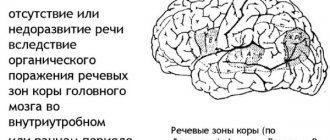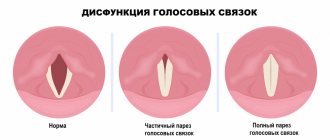Interactive educational model of speech therapy examination: formation of a working hypothesis
Introduction
Transferring a student from mastering theoretical knowledge to applying it in practical work with children with disabilities continues to be one of the most difficult tasks of higher defectology education. The previously established and established idea that students can master this skill only in real practice is being questioned in connection with the opened possibility of simulating (recreating) in the digital space the practical professional activity of a defectologist of any profile on any required set of children’s cases, with all the necessary teaching variations and feedback 1. Based on an understanding of the prospects for the growth of the capabilities of the digital educational environment and technologies, at the beginning of 2000 (more than twenty years ago) a series of studies was launched in correctional pedagogy on the design and use of digital tools for developing the readiness and ability of a student-defectologist apply theory in practical work with children before and outside of direct contact with them. A typology of special digital tools for the professional training of defectologists of various profiles, a methodology for their design and application 2 were developed, the effectiveness of the created experimental samples was proven 3, 4, 5, 6, 7, 8, 9. The importance of the created line of digital tools for the qualitative transformation of professional training of defectologists - transition to the creation of a virtual laboratory for teachers and students, where targeted “rehearsals” of future professional activities become possible, practicing professional skills on a variety of successively more complex children’s cases, where students acquire the first positive experience of applying theory in practice with children before direct contact with them. It does not replace, but precedes real practice, fundamentally increasing the student’s readiness to begin his professional activity, and allows him to avoid gross errors in diagnosis and planning of correctional work at the start.
The purpose of this study
included the design of a digital tool of a certain type - an interactive model of the practical work of a speech therapist, allowing the student to see and understand how R.E.’s theory is applied. Levina at the initial stage of professional activity in preparation for examining a child, how a working hypothesis is formed step by step, how a standard scheme of speech therapy examination is transformed into an individual one to test the hypothesis put forward.
We modeled the evidence-based practice of training a speech therapist at the R.E. school. Levina to the examination of a child with a stutter - step-by-step formation of a structured working hypothesis about the nature of stuttering, the degree of its severity, etiology, clinical condition based on an analysis of the child’s personal file.
Methodological basis of the study
The methodological basis for understanding the tasks, content, and methods of diagnosing stuttering was the theory of R.E. Levina, who considers stuttering as a speech disorder with a predominant violation of its communicative function. This understanding led to criticism of methods of “quick” elimination of stuttering based on a symptomatic approach and formed the basis of a new look at the diagnosis and psychological and pedagogical correction of stuttering 10, 11, 12.
R.E. Levina showed what exactly a speech therapist should be interested in when examining a child with such a speech disorder:
- general behavior and, above all, its affective coloring (excitability, lethargy, etc.);
- communicative behavior (primarily sociability and the child’s reactions to changes in communication conditions);
- independent speech accessible to the child (situational speech of varying degrees of complexity and forms of contextual speech);
- stability of attention, the child’s performance, features of his entry into activities 13, 14, 15.
R.E. Levina emphasized that a reasoned speech therapy conclusion, based on a combination of diagnostic data with data from dynamic observation of a child with a stutter, is necessary for reasonable planning of correctional work 16.
The process of diagnosing a child’s speech disorder is a step-by-step test of a working hypothesis about the nature, severity and clinical cause of stuttering. A hypothesis is formed before meeting the child based on an analysis of the child’s developmental history, his psychological and pedagogical characteristics, as well as the submitted written works.
Step by step modeling the professional activity of a speech therapist in the digital space, we used the methodology developed in correctional pedagogy to create interactive models of the practical work of a speech pathologist with children
17. These are models that integrate the presentation of logic, sequence, stages, steps, professional actions with their video presentation on a specially selected set of children's cases and the mandatory visualization of a specialist’s thoughts hidden from observation in real practice, which determine the essence of professional actions at each stage 18.
According to the methodology, this kind of model reflects all stages of professional activity: preparation for examining a child, conducting an examination, forming a conclusion, transition from the conclusion to planning correctional work, carrying out correctional work, analyzing current results and adjusting further work with the child. What are their advantages compared to demonstration/video demonstration of real practice?
The first advantage is the ability to model, demonstrate, and comment to students on all steps in the practical work of a specialist, including those that are not directly observable in real practice and cannot be recorded during video recording.
The second advantage is the opportunity not only to demonstrate the logic and steps in the practical work of a specialist, but also to “play out” them many times on varying, successively more complex children's cases. The teacher can choose the stage/step of professional activity and children’s cases that interests him, demonstrating and discussing with students how the work of a specialist known to them from the theoretical course will look like in practice, and what will change if the child’s case turns out to be more complex and confusing.
Let us show how these methodological ideas are implemented when modeling the process of preparing a speech therapist for examining a child, which ends with putting forward a substantiated hypothesis about a speech disorder and transforming a standard examination scheme into an individual one to test the hypothesis.
As a model example, consider the preparation of a speech therapist to examine a child with a suspected stutter.
Designing an interactive educational model for preparing a speech therapist to examine a child with suspected stuttering
In practice, preparation for a speech therapy examination of such a child includes a consistent analysis of the history of his development, psychological and pedagogical characteristics and, of course, independent written work. Based on theoretical knowledge about the essential signs of various variants of stuttering and applying them when analyzing the child’s personal file, a knowledgeable, experienced speech therapist skillfully and promptly identifies essential facts that indicate with a high degree of probability the nature, severity, etiology, clinical conditionality, thanks to which a working hypothesis is formed about a speech disorder. Next, the standard scheme of speech therapy examination is transformed into an individual one in accordance with the hypothesis, which makes it possible to reduce the time of diagnosis, make it more targeted, and, ultimately, more accurate. The formed hypothesis is tested during a speech therapy examination.
By modeling this initial stage of a speech therapist’s practical work, we model the logic, sequence of steps, essence and result of professional actions. First of all, all the steps in the work of a specialist at the preparatory stage are highlighted:
The first step is to analyze the history of the child’s development and search for facts that can indicate the nature of the speech disorder, its causes, etc. This is the beginning of the formation of a hypothesis.
The second step is to analyze the psychological and pedagogical characteristics of the child and search for information indicating the nature of the speech disorder, the degree of its severity, the general structure of the speech development disorder, and clinical interest. The previously made assumption is clarified, new data is identified that allows the sections of the hypothesis to be supplemented.
The third step is to analyze written work and identify specific errors in writing. The working hypothesis is again clarified, supplemented, and its formation is completed.
Having identified the steps in the work of a specialist at the preparatory stage, we model them in the required sequence on the dynamic diagram of the professional activity of a speech therapist and immediately make clear the required result - the hypothesis of a speech disorder and the structure of its description (see Fig. 1).
Figure 1. Steps in forming a working hypothesis about a speech disorder
Why is it so important to model not only the sequential steps in the work of a speech therapist at the preparatory stage, but also immediately show students a structured hypothesis about a speech disorder?
The structure of the hypothesis is set on the model immediately, because the structural components of the hypothesis are the specialist’s guidelines when analyzing the child’s personal file: developmental history, psychological and pedagogical characteristics, written works. (see Fig. 2). It is equally important that the structure of the hypothesis will be used as the structure of the speech therapy conclusion, since they are united and, in accordance with the scientific school of R.E. Levina, should include a description of the nature of stuttering, its severity, the structure of speech development disorders, and clinical interest.
Figure 2. The structure of the hypothesis about a speech disorder - a speech therapist’s guide for analyzing a child’s personal file
The advantages of this model of professional activity include the possibility of:
- visualize and comment on the logic, sequence of steps and results of preparation for examining a child;
- present and comment on guidelines for a professional analysis of a child’s personal file (hypothesis structure);
- show and comment on the process of step-by-step formation of a working hypothesis about a speech disorder;
- “play out” in the classroom the preparatory stage for examining a child and any of the steps on the required number of children’s cases, consistently complicating the difficulty of forming a working hypothesis;
- analyze and comment on all the speech therapist’s actions, including not only those visible and easily observed in real practice, but also those hidden from direct observation and video recording;
Let's take a closer look at the model.
Creating a working hypothesis: step one
We begin to form a hypothesis about a speech disorder based on an analysis of the child’s developmental history. The logic, sequence, essence and expected result of the first step in the speech therapist’s work on the hypothesis - analysis of the history of development - is presented to the student on an interactive diagram (see Fig. 3).
Figure 3. Logic, sequence, essence and expected result of the speech therapist’s analysis of the child’s developmental history
Analyzing the child's developmental history, the specialist looks for significant facts indicating the nature of stuttering and its causes. To demonstrate to the student this process of analysis, hidden from observation in real practice, we use dynamic modeling and visual metaphors - we consistently highlight, enlarge, and bring to the fore facts from the history of the child’s development that indicate a certain type of stuttering (see Fig. 4).
Figure 4. Identification by a speech therapist of a fragment of the child’s developmental history that is significant for the formation of a working hypothesis
Next, the student sees that the facts found and their professional interpretation allow the specialist to begin to form a hypothesis - to make the first informed guess about the nature of the speech disorder and enter it into the appropriate section of the hypothesis.
In the model, the hypothesis is presented in all structural elements, so it is easy to show the student that in the history of the child’s development, the specialist did not find any indicators of the severity and structure of speech development disorders, so the corresponding part of the hypothesis justifiably remains open and unfilled.
We clarify and supplement the hypothesis - step two
Next, the student’s focus becomes the specialist’s analysis of the child’s psychological and pedagogical characteristics. The logic, sequence, essence and expected result of the second step in the speech therapist’s work on the hypothesis are presented to the student on an interactive model (see Fig. 5).
Figure 5. Logic, sequence, essence and expected result of the speech therapist’s analysis of the child’s psychological and pedagogical characteristics
The interactive model again helps to bring to the attention of students the process of identifying information in the child’s characteristics that is significant for clarifying the already outlined nature of the violation, and facts indicating the degree of its severity, which is necessary for constructing a correct working hypothesis.
Dynamic modeling and visual metaphors are again used - fragments of the child’s characteristics are enlarged and brought to the fore, indicating differentiating signs of the severity of stuttering (see Fig. 6).
Figure 6. Identification of a fragment of the child’s psychological and pedagogical characteristics that is significant for the formation of a working hypothesis.
The student sees in the model that during the analysis, the speech therapist identifies in the characteristics a stable manifestation of stuttering in all forms of speech, which makes it possible to reasonably supplement the hypothesis - to make an assumption about the severity of the speech disorder.
We complement and complete the formation of the hypothesis - step three
We complete the formation of a hypothesis based on an analysis of the child’s mistakes in writing, relying on knowledge of specific errors and their frequency and using them as differentiating signs of a disorder. The interactive teaching model again reflects the logic, sequence, essence and expected result of the speech therapist’s analysis of the child’s written work (see Figure 7).
Figure 7. Logic, sequence, essence and expected result of the speech therapist’s analysis of the child’s written work
The model allows students to demonstrate how a specialist analyzes the child’s writing errors and looks for those that may indicate the severity of stuttering and its clinical interest. Thanks to dynamic modeling and the use of visual metaphors, specific errors in writing - perseveration - are highlighted and enlarged. Their presence and frequency confirm previously made assumptions about the severity of stuttering and indicate its clinical characteristics - types of seizures (see Fig. 8).
Figure 8. Identification of specific errors in the child’s work that are significant for constructing a working hypothesis
The student sees how new information influences the formation of a hypothesis - the assumption about the severity of the child’s stuttering is confirmed and data appears for the assumption about the type and form of seizures. It also becomes obvious that no facts have been found indicating a combination of stuttering with other speech development disorders; accordingly, in the section of the hypothesis “Structure of speech development disorders,” the speech therapist makes his assumption about uncomplicated stuttering.
The preparatory stage of the examination ends with the analysis of all collected data and the formation of a structured working hypothesis describing the probable nature of the disorder, the expected structure of the speech development disorder (uncomplicated or combined with general speech underdevelopment (GSD), phonetic-phonemic underdevelopment (FFN), phonetic underdevelopment (PH)) ; severity of stuttering (severe, moderate, mild), type of seizures (tonic, clonic, mixed); and the form of seizures (articulatory, respiratory, vocal, mixed) (see Fig. 9).
Figure 9. A structured working hypothesis is the result of the speech therapist’s preparation for examining the child.
Transformation of a standard examination scheme into an individual one in accordance with the hypothesis put forward
Having formed a working hypothesis, the speech therapist proceeds in practice to transform the standard examination scheme into an individual one for targeted verification of the assumptions made. This stage should also be reflected in the model, since it completes preparation for the examination of the child.
The interactive model allows you to demonstrate the process of converting a standard survey design into an individual one. The subject of analysis and discussion with students is the “adaptation” of a standard examination scheme to a specific child case. Visual metaphors are used, so the student can see, and the teacher can comment on, how a professional selects from all possible areas of examination those necessary to test his working hypothesis and excludes from the examination scheme those that are irrelevant for a given child’s case. So, in our example, the hypothesis indicates uncomplicated stuttering; accordingly, from all possible (standard) areas of speech therapy examination, only those that allow a targeted test of the hypothesis of stuttering will be selected.
So, using the example of a stuttering case, we have presented in relatively detail an interactive model for preparing a speech therapist for examining a child - forming a working hypothesis about a speech disorder. Next, in practice, the working hypothesis is tested during a speech therapy examination of the child and a substantiated conclusion is formed.
We will show the possibility of developing a model similar in concept to the stages and steps of a speech therapist’s professional activity following the development of a working hypothesis.
Testing the hypothesis - speech therapy examination of the child
When the individual examination plan is ready, the speech therapist proceeds to the examination itself. This step in the specialist’s work is also modeled. Having selected children's cases of a certain degree of complexity, requesting video clips, the teacher can show in detail the stage of the examination in the selected areas, and most importantly - make visible and comment on the process of collecting data during the examination of the child and their correlation with the hypothesis: do they confirm the assumptions or contradict them.
For example, during the examination it may turn out that stuttering is complicated and therefore it is necessary to adjust the hypothesis by adding an examination of the child’s general speech development. In this case, the expansion of the examination plan is visualized by diagnosing the development of oral and written speech. By requesting a video, you can view an examination of the general speech development of a given child by a qualified speech therapist. The advantage is the visualization of the collection of new data and their contribution to refining the working hypothesis.
The hypothesis put forward may be clarified, require adjustment, or be completely confirmed during a speech therapy examination. But even in the latter case, it would be premature to draw a conclusion, since dynamic observation of the child’s behavior in various communicative conditions over a long period of time is required. The model helps the teacher draw the student’s attention to this rule of the professional work of a speech therapist at the R.E. school. Levina. Without dynamic observation of the behavior of a stuttering child in different communication conditions, a conclusion about a speech disorder will not be sufficiently reliable, therefore this stage of practical professional activity should also be represented in the model.
Dynamic observation of child behavior in different communication conditions
Having turned to the model, highlighting this stage of professional work together with students, the teacher can request videos, show them in the classroom and comment on the child’s behavior with familiar and unfamiliar adults, with friends and unfamiliar peers, in free activities (during walks, excursions, etc.) ...), in educational activities (in the child’s oral answers from his seat, at the blackboard in different lessons). The teacher directs students to analyze the manifestations of stuttering and their frequency in various communicative situations with various partners. The process of collecting diagnostic data during the analysis of video recordings of a child’s behavior in different communicative conditions and their correlation with the working hypothesis is visualized.
If the hypothesis is confirmed by examination data and dynamic observation, you can move on to the next stage of practical work - the formation of a speech therapy report. Now the process of transforming a working hypothesis into a speech therapy conclusion is modeled.
Transformation of a working hypothesis into a speech therapy conclusion
First of all, the model demonstrates that the structure of the hypothesis becomes the structure of the speech therapy conclusion; they are uniform and include a description of: the nature, severity, clinical interest, structure of speech development disorders (“pure” or complicated). The student sees how the hypothesis is transformed into a conclusion, and the collected data serves as evidence of its correctness.
Results and discussion
The conducted research develops the idea of creating a virtual laboratory for a teacher and a defectologist student, which makes it possible to focus on the application of theory in practical work with children with disabilities before and outside of direct contact with them.
The practical professional activity of a speech therapist becomes the subject of modeling for students, their attention and analysis. The model recreates all the stages and steps in a specialist’s work, including those that are not observable in “live” practice, and is “played out” in the classroom using a specially selected set of children’s cases.
An interactive model of the professional activity of a speech therapist at the initial stage is presented - the formation of a working hypothesis about a speech disorder in preparation for examining a child. The advantages of the model are shown, which allows:
- demonstrate, analyze and comment in the audience on the logic, sequence of steps and the result of preparation for examining a child, including not only visible, but also actions of a professional hidden from direct observation and video recording;
- visualize the structure of the working hypothesis as a guideline for a professional analysis of the child’s personal file;
- make the process of step-by-step formation of a working hypothesis about developmental disorders the subject of analysis;
- “play out” in the classroom the preparatory stage for examining a child and any of the steps on the required number of children’s cases, consistently complicating the difficulty of forming a working hypothesis;
- demonstrate the transformation of a standard examination scheme into an individual one based on the formed hypothesis;
- make the focus of students' attention on testing the hypothesis during examination and dynamic observation of the child in various communicative conditions;
- show the process of collecting data and correlating it with the hypothesis of a speech disorder;
- make the subject of analysis the transformation of the hypothesis about a speech disorder into a speech therapy conclusion based on the collected data.
The role of dynamic modeling and the use of visual metaphors for the presentation and discussion of hidden actions of a specialist is shown.
For the first time, a model for presenting variations in professional activities to students due to the varying complexity of children's cases is shown.
The global pandemic and the massive transition to distance learning have made it even more necessary and promising to search for modern solutions to the problem of transferring students from theoretical concepts to their effective application in practical work with children. We have shown one of the possible solutions that will qualitatively transform the established practice of classroom work that developed at the previous stages of development of higher defectology education in the pre-digital world.




